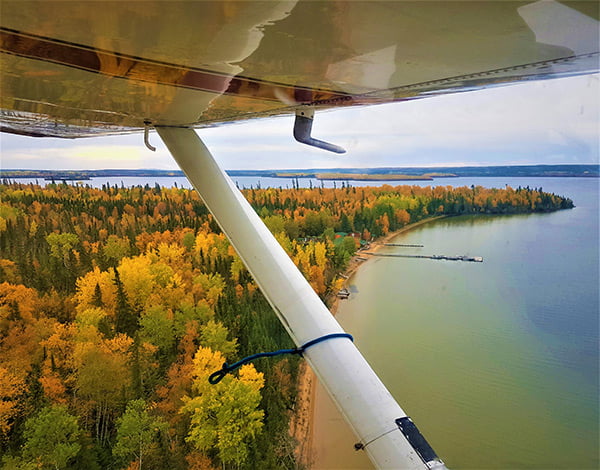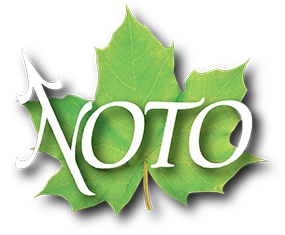Forest Management Plans
 Forest Management Plans are created to ensure the sustainability of the forest while finding a balance of social, economic and environmental values. These plans are prepared by a registered professional forester with input from local citizens, Aboriginal communities, and stakeholders and are approved for a 10-year period. These plans determine how much wood will be harvested in specific areas, where roads can be built, and how much forest will be renewed.
Forest Management Plans are created to ensure the sustainability of the forest while finding a balance of social, economic and environmental values. These plans are prepared by a registered professional forester with input from local citizens, Aboriginal communities, and stakeholders and are approved for a 10-year period. These plans determine how much wood will be harvested in specific areas, where roads can be built, and how much forest will be renewed.
This page focuses on the stages of a Forest Management Plan and provides a description on how to participate to let your comments, questions and concerns be heard. NOTO receives the forestry notices and invitations to participate for each Forest Management Unit.
Operators can learn more about forestry notices and access links to participate in the Forest Management Planning consultation processes on the Forestry Notices page.
The following is a quick description of the steps involved in a Forest Management Plan. The information presented comes from the “Handbook for Getting Involved in Forest Management on Crown Lands in Ontario“.
Stages of a Forest Management Plan (FMP)
Stage 1 – Invitation to participate:
When a new FMP is being prepared, an Invitation to Participate will be sent to invite you to get involved in the planning process. During this stage, you can meet with the planning team, the plan author, and the Local Citizen’s Committee (LCC) to discuss your interests and share what you know about the forest.
Individuals are encouraged to provide any information they have on the following topics:
- Location of tourism establishments
- Canoe routes
- Mining claims
- Archaeological sites
- Traplines
- Cabins
- Species at risk
- Wildlife habitat areas
Individuals are also encouraged to provide their views on how the forest should look in the future and what benefits they want the forest to provide.
All of the information collected will assist the planning team in establishing what the forest will look like in the future, and the benefits that will be made available. Once this has been established, the planning team will propose objectives and use computer models to predict what the forest might look like based on different forest management options.
If you have a concern, you should discuss it with the plan author or your MNRF office. If you feel your concern has not been addressed, you can request an issue resolution with the MNRF district manager. If your issue is still not addressed following this step, you may request an issue resolution with the MNRF regional director.
Stage 2: Review of the Long-Term Management Direction
During this stage, the team analyzes the background information collected and the comments received by the public. The team then assesses which management option best achieves the objectives identified. The maximum sustainable harvest area is also established at this step of the planning process.
At this stage, you will receive an Invitation to Review the Long-Term Management Direction from the MNRF. Items that you may be interested in reviewing and commenting on at this stage are:
- Summary of the proposed long-term management direction for the forest
- Summary of the comments received on the plan and responses send to date
- Summary of the desired forest benefits meeting held between the planning team, the LCC and First Nation communities
- Maps of the harvest operations from the previous 10-year cycle
- Criteria used to choose potential harvest areas for the new FMP
- How the preferred harvest areas were chosen
- Proposed locations of primary roads
- The management strategies for proposed primary roads
- A summary of the LCC activities up-to-date
If you have raised a concern with the plan author or the MNRF and you feel your concern has not been addressed, you can request an issue resolution with the MNRF district manager. If your issue is still not addressed following this step, you may request an issue resolution with the MNRF regional director.
Stage 3: Review of Proposed Operations
During this stage, the MNRF will send an Invitation to Attend the Information Centre where the plan author, members of the planning team, and a representative from the LCC will answer questions.
Some of the information you may be interested in reviewing or commenting on at this stage are:
- Proposed locations of roads and locations where aggregates may be extracted
- Management strategies for the proposed roads
- Proposed locations of harvest, renewal and tending operations
- Location of values or important ecological features
- How impacts to values or important ecological features will be prevented, minimized, or mitigates during forest operation
If you have any additional information on any of the items listed above, you are encouraged to share them. Your input may result in changes to the proposed operations for the forest management unit.
If you have raised a concern with the plan author or the MNRF and you feel your concern has not been addressed, you can request an issue resolution with the MNRF district manager. If your issue is still not addressed following this step, you may request an issue resolution with the MNRF regional director.
Stage 4: Review of Draft Forest Management Plan
At this stage, a draft Forest Management Plan is prepared and reviewed by the MNRF. You will receive an Invitation to Attend an Information Centre to review and comment on the draft. This stage involves a 60-day review and comment period.
At this stage, you may comment on the proposed forest operations in the draft and review whether your interests and issues have been addressed. You can also provide additional information that will help the planning team finalize the FMP. All comments and issues must be raised within the 60-day review period.
If you have concerns or feel your interests are not protected, you may discuss this with the plan author or the MNRF. If you feel your concern has not been addressed, you can request an issue resolution with the MNRF district manager. If your issue is still not addressed, you may request an issue resolution with the MNRF regional director within 30 days after the 60-day review and comment period.
Stage 5: Inspection of Approved Forest Management Plan
At this stage, the plan is revised to address the comments and concerns received. The plan is then submitted to the MNRF regional director for approval. Once approved, you only have 30 days to inspect it.
If you have any unresolved issues at this stage, you are encouraged to reach out to your MNRF Regional Director and MNRF District Manager during the 30-day inspection period. This can only be done if you have raised concerns through the formal issue resolution process at any of the previous stages and they have not been addressed to your satisfaction, or you believe the approved FMP contains operations that will result in significant adverse environmental impacts.



